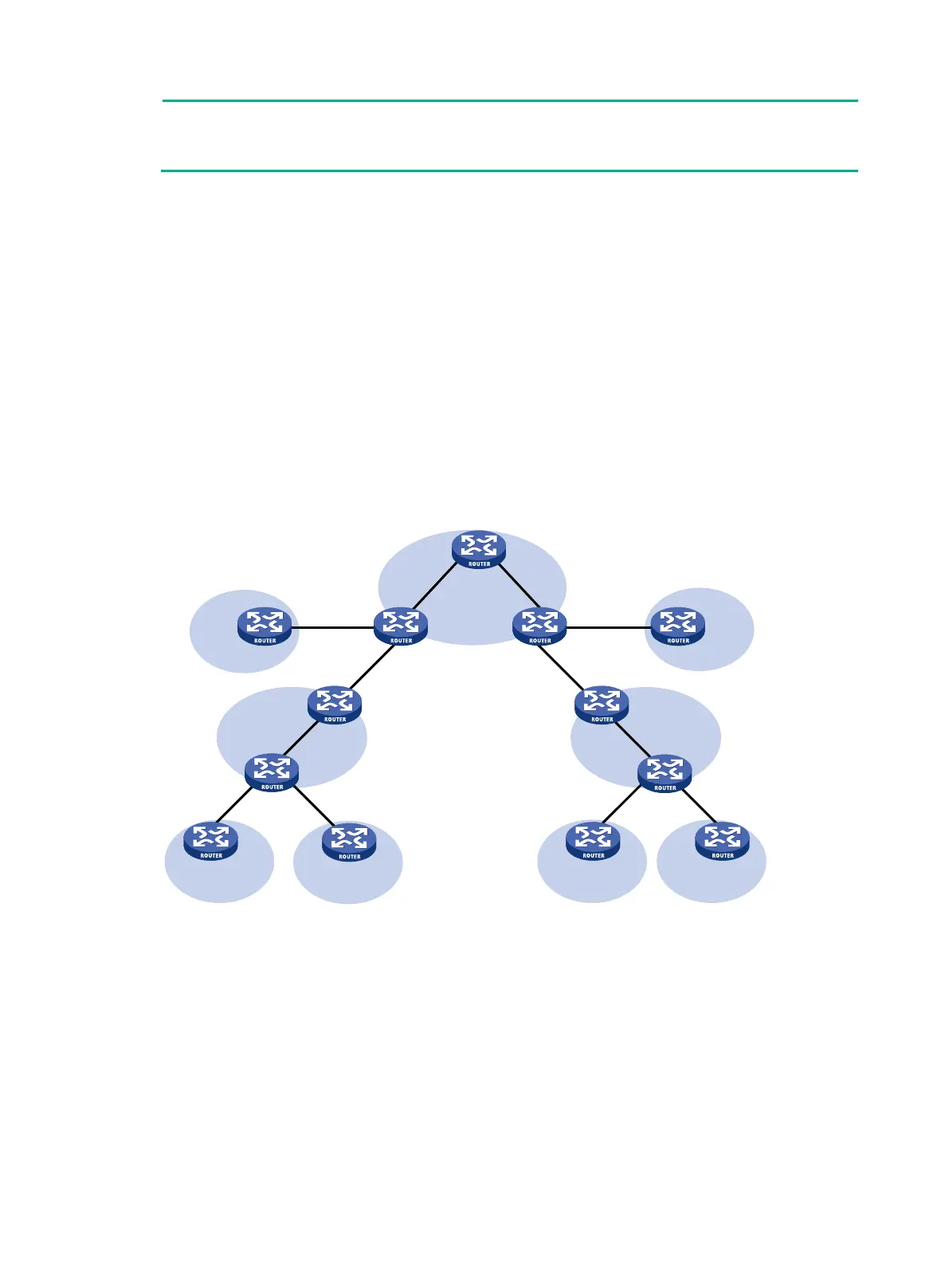167
If equal cost routes exist between the Level 1 carrier and the Level 2 carrier,
establish equal cost
LSPs between them as a best practice.
Nested VPN
The nested VPN technology exchanges VPNv4 routes between PEs and CEs of the ISP MPLS
L3VPN and allows a customer to manage its own internal VPNs. Figure 52 shows a nested VPN
network. On the service provider's MPLS VPN network, there is a customer VPN named VPN A. The
customer VPN contains two sub-VPNs, VPN A-1 and VPN A-2.
The service provider PEs consider the customer's network as a common VPN user and do not join
any sub-VPNs. The service provider CE devices (CE 1 and CE 2) exchange VPNv4 routes including
sub-VPN routing information with the service provider PEs, which implements the propagation of the
sub-VPN routing information throughout the customer network.
The nested VPN technology supports both symmetric networking and asymmetric networking. Sites
of the same VPN can have the same number or different numbers of internal VPNs. Nested VPN
also supports multiple-level nesting of internal VPNs.
Figure 52 Network diagram for nested VPN
Propagation of routing information
In a nested VPN network, routing information is propagated by using the following process:
1. After receiving VPN routes from customer CEs, a customer PE advertises VPN-IPv4 routes to
the provider CE through MP-BGP.
2. The provider CE advertises the VPN-IPv4 routes to the provider PE through MP-BGP.
3. After receiving a VPN-IPv4 route, the provider PE keeps the customer's internal VPN
information, and appends the customer's MPLS VPN attributes on the service provider network.
It replaces the RD of the VPN-IPv4 route with the RD of the customer's MPLS VPN on the
service provider network. It also adds the export route-target (ERT) attribute of the customer's
MPLS VPN on the service provider network to the extended community attribute list of the route.
The internal VPN information for the customer is maintained on the provider PE.
Provider PE
CE
3 CE 4
Provider MPLS
VPN backbone
P
VPN A-1
VPN A-1
VPN A-2
CE 7
Provider PE
VPN A-2
CE 8
Customer MPLS
VPN
Customer PE
CE 5
CE 6
VPN A-1
VPN A-2
Customer MPLS
VPN network
Customer PE
CE 1
CE 2
VPN A

